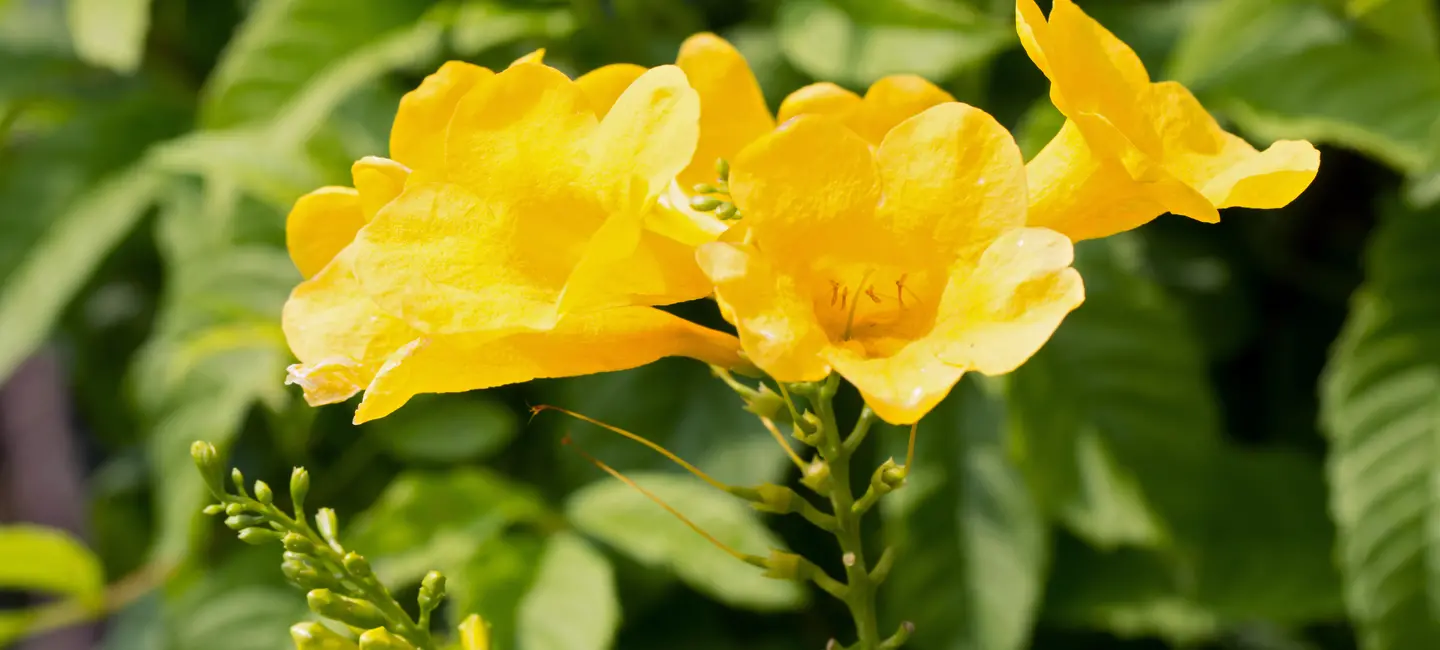
Gelsemium is a plant. Some people call it "woodbine." This can be confusing because American ivy and honeysuckle are also known as "woodbine." If you want gelsemium, look for its scientific name, which is Gelsemium sempervirens, Gelsemium nitidum, or Bignonia sempervirens.
Despite serious safety concerns, the root and underground stem (rhizome) of gelsemium are used for migraine, nerve pain in the face, asthma, and other breathing problems, but there is no good scientific evidence to support these uses.
Is It Effective?
NatMed Pro rates effectiveness based on scientific evidence according to the following scale: Effective, Likely Effective, Possibly Effective, Possibly Ineffective, Likely Ineffective, Ineffective, and Insufficient Evidence to Rate.
- Asthma.
- Migraine.
- Pain due to a condition of facial nerves called trigeminal neuralgia.
- Other conditions.
More evidence is needed to rate the effectiveness of gelsemium for these uses.
Is it Safe?
Gelsemium contains substances that might act in the brain to reduce pain.
When taken by mouth: Gelsemium is UNSAFE. All parts of the plant are very poisonous. Even small amounts can cause serious toxicity, including death. Symptoms of poisoning include headache, vision problems, difficulty swallowing, dizziness, muscle problems, seizures, breathing problems, slowing of the heart, and others.
Special Precautions & Warnings:
It is UNSAFE for anyone to use gelsemium, but some people have extra reasons not to use it:
Pregnancy and breast-feeding: It's UNSAFE to use gelsemium. It is very poisonous.
Children: Gelsemium is UNSAFE. Do not give gelsemium to children. It can poison them, even in very small amounts.
Heart disease and weakness: Gelsemium is especially dangerous if you have a heart problem.
It is not known if Gelsemium interacts with any medicines. Before taking Gelsemium, talk with your healthcare professional if you take any medications.
There are no known interactions with herbs and supplements.
There are no known interactions with foods.
The appropriate dose of gelsemium depends on several factors such as the user's age, health, and several other conditions. At this time there is not enough scientific information to determine an appropriate range of doses for gelsemium. Keep in mind that natural products are not always necessarily safe and dosages can be important. Be sure to follow relevant directions on product labels and consult your pharmacist or physician or other healthcare professional before using.
Bignonia sempervirens, Carolina Jasmine, Evening Trumpet Flower, False Jasmine, Faux Jasmin, Gelsémie, Gelsémie Toujours Verte, Gelsemii Rhizoma, Gelsemin, Gelsemio, Gelsemium nitidum, Gelsemium sempervirens, Gelsemium Toujours Vert, Gelsemiumwurzelstock Jessamine, Gou Min, Jasmin de Caroline, Jasmin Jaune, Jasmin Nid d'Abeilles, Jasmin de Virginie, Trumpet Flower, Woodbine, Yellow Jasmine, Yellow Jessamine Root.
Information on this website is for informational use only and is not intended to replace professional medical advice, diagnosis, or treatment. While evidence-based, it is not guaranteed to be error-free and is not intended to meet any particular user’s needs or requirements or to cover all possible uses, safety concerns, interactions, outcomes, or adverse effects. Always check with your doctor or other medical professional before making healthcare decisions (including taking any medication) and do not delay or disregard seeking medical advice or treatment based on any information displayed on this website.
© TRC Healthcare 2024. All rights reserved. Use and/or distribution is permitted only pursuant to a valid license or other permission from TRC Healthcare.
